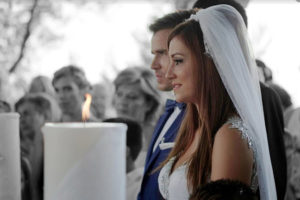Pakistan Tradition Dress – The division of Pakistan is based on provinces which are divided into 4 provinces; Punjab, Khyber Pakhtunkhwa, Sindh, and Baluchistan. They all have different culture and tradition based on the different trend of clothing but the main and popular dress is shalwar Kameez for both men and women. Shalwar Kameez is also the national dress of Pakistan which is a loose trousers and Kameez mean a long shirt up to knees.
You will find a variety of tradition and culture in Pakistan. Punjabi will wear shalwar Kameez according to their society and Pashtoon will also according to their culture and society e.g. Punjabi shalwar Kameez, Sindis shalwar Kameez. Different languages are spoken in the entire provinces which are Urdu, Punjabi, Pashto, Sindhi, Baluchi, and Hindko etc. Typically the dress worn by Pakistani is shalwar Kameez but if there it is their tradition they wore dress according to their culture. The way they dress is influenced by the weather in that area.
-
Punjab:
For men:
Punjabi dress of Punjab is mainly consisting of Pagri, Kurta, and dhoti. A pagri is a piece of long cloth that is unstitched and is used as a headdress. It is wrapped which shows the symbol of an honorable person. Kurta is a loose Kameez (shirt) which is on knees. It is embroidered which is not that necessary it depends on interest. Some men like plain shirt other like embroidery one. While A dhoti is for covering legs which is also unstitched of 7 yards in length and is wrapped around the legs and are fully covered. They wrapped it in a proper way.
For women:
Women wear plain shalwar Kameez with dupatta. Kameez is a long shirt to knees which are open and designed in a V-shaped on both sides below the waist. Shalwar is a type of pajama which is a little bit loose. Dupatta is a scarf type rectangular in shape and is used to cover head and chest area.
-
Khyber Pakhtunkhwa:
For men and women:
The shalwar Kameez of Khyber Pakhtunkhwa is called Khat Partug worn by both men and women. The khat is also called khatakki or kamis. Khat is a tight shirt to the waist and flares out below to the knees in case of men and to the ankles in case of women. The khat is simple for men and is embroidered for women in the neck area with a famous needlework. Partug is a sort of loose shalwar like pajama but pajama is a bit tight to the ankles. Men use a scarf type cloth around the head called as Patkai. Women use a headscarf to cover their head and chest area.
If worn by the female is also called Firaq. The Firaq has a variety of two designs; the jalana khat and the girdana khat. The division is based on married and unmarried women. Unmarried women wear the jalana khat that is designed loose and full of embroidery. The girdana is worn by married women typically of red and other prominent colors. Both designs have many pleats which are also worn by Afghani girls.
-
Baluchistan:
For men:
They wear a frock type loose shirt that is very long to heels. Sleeves of frock are also loose and long as well to the wrist area. The trouser is mainly a loose shalwar to ankle. They use a long scarf or chadar, a pagri that is a cotton cloth for covering the head. The stuff of cloth is very thick with a very loose shalwar.
For women:
They wear a loose frock that goes a little below the knees. The dress is mostly embroidered that is almost handmade. The embroidery is done by silk thread chain. They have to round about 118 embroidery designs for Baluchi dresses. The trouser is a very loose shalwar up to the ankles as for men. For covering the head and chest area the women use an unstitched and long rectangular scarf.
-
Sindh:
For men:
Lungi or dhoti is used by men to cover their legs which are wrapped around the waist so it covers the lower body. Other dresses worn by Sindis are Sindhi Suthan and Sindhi Angelo. The Sindhi Suthan is a traditional shirt which is also called angerkho. The shirt is loose with long and loose sleeves covering the arm to hands.
For women:
The traditional dress from the history of Sindh is Lehnga which is still worn by some women but is replaced by some other women. Ghagra is worn by women live in Thakparkar district which is modified and heavy form of typical lehnga. Here is the choice some people make it with fit or lose choli. The neck area is fully embroidered with a specific needlework. Some women wear Gaji (pullover shirt) in mountainous areas. Gaji is a square panel on which the embroidery is done with silk and sequins.





Add Comment